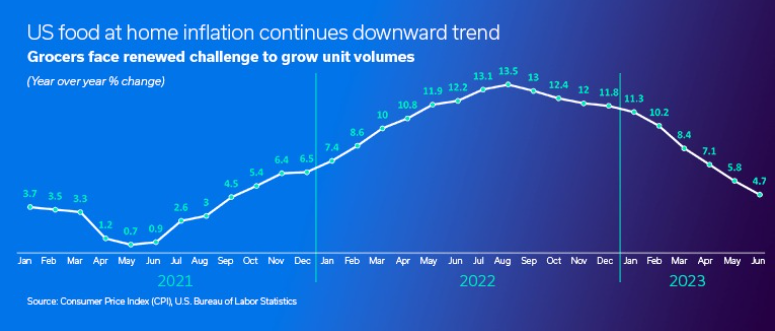Grocers in the U.S. and the European Union are facing a new growth challenge as inflation eases in most markets. While rates of inflation remain above the historical norms of developed economies, a downtrend is clearly evident (see chart below) which means grocers must pivot to drive unit volume growth and reduce their reliance on price increases, driving top-line growth. This is a major shift from recent years when surging inflation created a massive tailwind for sales. However, rampant inflation had various side effects on shopper behavior, including the creation of an unbalanced growth situation that oftentimes saw grocers’ sales increase even as they sold fewer units.

Inflation is expected to ease further in the months ahead although there is uncertainty regarding the size and pace of future declines. As a result, increasing unit volumes will be essential for grocers to restore healthy, balanced growth in an environment also likely to see heightened promotional activity and ongoing loyalty pressures. The following are five effective strategies retailers can employ amid these new market dynamics. These five strategies, all of which revolve around increased use of analytics using shopper and other forms of data, put retailers in a stronger position to drive levels of unit volume growth needed to offset further declines in inflation. Learn more about the effective use of shopper analytics to grow unit volumes and counteract the effects of inflation. Get in touch today!